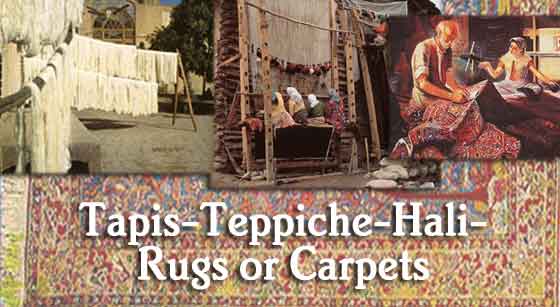 |
||||||
 |
||||||
| The Alternative Investment By Panos Pamukoglu KILIM-HALI 9, Valaoritou Street Athens 106 71 Greece TEL 010-3637056 , E-mail panpam@otenet.gr Carpets transmit their meaning through imagery and colors. The impression conveyed by the beautiful rug permeates the senses with harmony, vibrating like music to the soul. Their images, strong or subtle touch our feelings; their colors excite and sooth our mind. Like all beautiful forms of art it lifts our spirit to behold. The uniqueness of carpets however lies elsewhere. They alone among art works have the capacity to convey an atmosphere of home, of belonging, of warmth. Carpets psychologically satisfy the most primordial human need for a safe and relaxed dwelling. It seems difficult for me to convey to the Western reader the level of artistic achievement that lies beneath what you may see as a mere humble floor covering.
The human talent that has entered the art of carpet weaving through the centuries has been manifold compared to the correspondent one that engaged at the abovementioned European art schools. We have to realize what wealth of painting would exist today if over one thousand villages and cities in Europe had developed their own school, like in carpets, with each having its distinct form, colors and language of expression. Speaking about rugs we have to address the difference between old and new carpets. Usually knowledgeable buyers and collectors are looking for old carpets. Why? Unfortunately, the art suffered a period of dilapidation commencing before the start of World War I, which gradually overtook all weaving areas and until World War II was the rule almost everywhere. One reason behind this unlucky event was the introduction of synthetic dyes by the end of the 19th century. The quality of color is of utmost importance to the desired effect of the rug patterns. Color was the specialty of the master dyers of the wool. For there could not exist great artistic synthesis without exquisite colors. Colors coming directly from nature were made with recipes held secret by the dyers and which were passed from generation to generation securing their family's livelihood and social importance.
Another reason was the forced relocation and urbanization of the independent and isolated nomadic tribes in the new countries that were formed after the wars. The carpets in the past were made by men or women who had developed their skill since they were very young. They learned from their elders to weave lovingly their specific traditional patterns using particular colors and technique. By instilling a part of their soul into the most important treasure of their culture they could in a sense make the rug to fly. The woven rug which, by its symbolic language revered the ancestors, which was also used to decorate the home or the tent but also served as a dowry, as a gift to a chief or as the offering to god. By being separated from its roots, tradition was slowly compromised. Price and the taste of the merchant started influencing the weavers who needed to sell to earn a living . Imitations of great designs and clumsy efforts to make new original ones resulted in lifeless and flat carpets. Only in older rugs can you see the free uncompromising artistic expression of those peoples whose way of life is more or less extinct forever. So the old rug is and will always remain superior to the contemporary one as it has inherent value of craftsmanship, originality and authenticity. Because of that it has another advantage. It retains its value. It offers to its owner a ready and steady market, usually in cash or most certainly as a trade in for another rug. But how one is to learn about old carpets? To the newcomer, the subject seems vast and impossible to master. There exists no safe way of labeling the carpets, no clear value reference as in paintings or furniture. Strange sounding names, confusing designs, age identification must be learned even before you know what you are talking about. My word of advice is, do not despair. My personal experience, in the years that I have been dealing in old and antique rugs, is that 99% of the time an otherwise inexpert client will be able to distinguish the most beautiful (and alas the most expensive rug) when laid out for viewing. You don't have to learn how to distinguish a keshan from a tabriz. You don't have to learn where the tekkes lived nor the recipe to prepare bright red color, just as you don't have to know who invented champagne in order to be able appreciate the taste of a good one when you taste it. You only have to train the senses, your aesthetic perception to see free from preconceived notions. Learn to follow the rhythm of the woven language and maybe even the meaning of the symbols and the colors. A whole world of immense sophistication and beauty will be yours to enjoy. If you are attracted to carpets this will come easy and be a pleasure at the same time. The only prerequisites to start the journey is to read a book or two about the subject, a visit to one of the many museums like in Istanbul, in Berlin, in London, in New York, in Philadelphia etc. where they exhibit some of the greatest carpets and a visit to your carpet dealer to invest a couple of hundred dollars to buy your first old or antique rug. Reading References: The Tribal Rug James Opie Caucasian Rugs Vol. 1 Oriental Rugs Series The Persian Carpet Cecil Edwards Rugs and Carpets of the World Ian Bennett |
||||||
|
||||||
